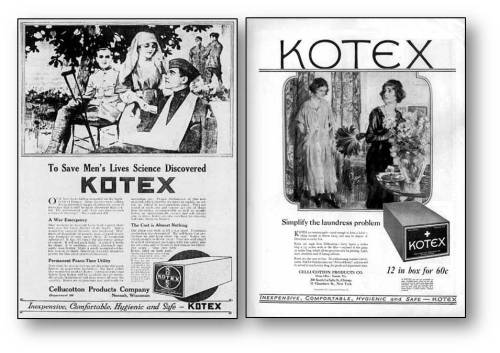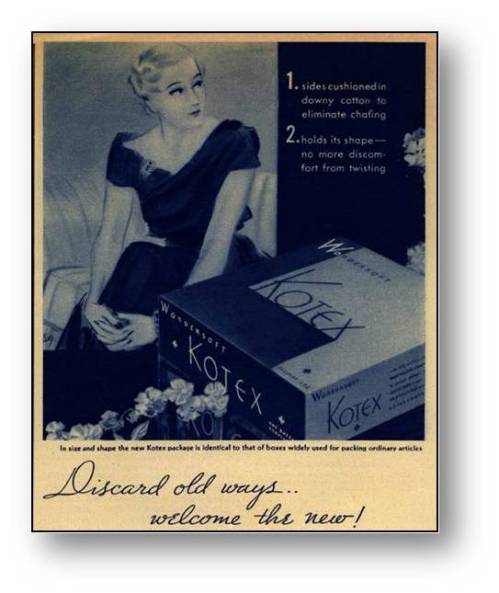The years of post World War I and the ratification of women’s suffrage in 1920 both mark as significant events in paving the way for increased opportunities for women. More importantly, it also paved the way for freedom from storing and washing cotton pads monthly, as it saw the commercialization of the first ever disposable sanitary pads manufactured by Kotex.
Originally the brainchild of The Kimberly-Clark Corporation which made bandages for American troops in Europe during the war-torn years, they found the potential of cellulose wrappings in their absorbency and relatively cheap price, in the process spurning a market for easy disposable pads.
However, the breakthrough of such an invention was not without difficulty, and if one were to analyze the presentation of the early Kotex ads, we would immediately be able to identify the challenges the company, many of which are non-existent today.
For one, the cultural taboos associated with menstruation were clear, as seen from the way the ads were presented down to the naming of it (i.e. Ko-tex “Cotton and texture” respectively in attempt to avoid obviousness). The prototype ad in around 1920 was in fact centered on men as seen in the tagline “To Save Men’s Lives Science Discovered” and was in fact rejected by the admen because there were “too many men for a product designed for women”. In fact, such was the sensitivity that “when Kotex was launched, it was considered necessary that a very delicate approach be made; indeed it was wondered whether ethical publications would even accept the copy.” In the end, the first ad published showed nurses treating a soldier. Such medical slant continued within that decade as seen in ads involving nurses, cross and “health protection”, familiar items creating confidence by association with medicine.
Needless to say, discretion was a main concern. The1920s ads made no reference at all to the menstruation process nor did it say exactly what the product was. Consumer appeals such as the product being made with seals to be “hygienically without contact of human hands” reflected the discomfort women (and probably men as well) felt. In fact, the 1927 questionnaire done by a competing company was probably the “first formal analysis of women’s attitudes about menstrual products” and found that besides ease of buying and disposal, women wanted anonymity as well. While this was dealt with in the end by stacking up Kotex boxes on display shelves instead of having to personally ask from the counter, it clearly showed that while on one hand women were gaining more societal freedom and recognition, it was still the early stages and something as natural as menstruation was still largely a taboo.
However, the 1930s saw more change in women’s roles and this was reflected in a fresher portrayal of Kotex ads which started to move away from the mere “easy disposal” and “clinical hygiene” marketing to make way for bolder and more confident ads. For example, a 1934 ad headline read “Discard old ways…welcome the new!” and that of a 1937 ad involved the picture of a lady actively involved in a sport with the promise that “Kotex can’t chafe” along with a well-dressed lady getting off a plane. There is a noticeable diversity in the portrayal of women beyond their traditional roles as stay-home housewives and this captures the development of women’s roles in society. However, the cultural taboo continued to be pervasive as seen in the continuing claim that “the new Kotex package is identical to that of boxes widely used for packing ordinary articles”.


